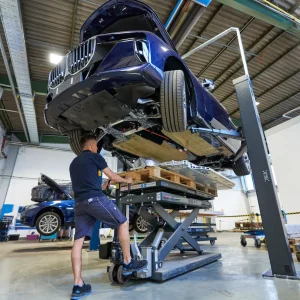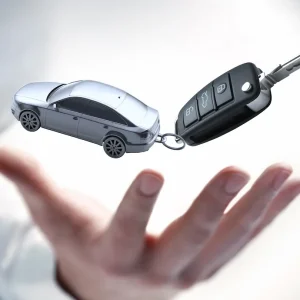While it is important to make an assessment of the vehicle and begin insurance proceedings following a collision, supporting the driver emotionally and physically should be a fleet’s main concern.
Interestingly, however, this human element can often be lost in processes geared towards the vehicle, which is why it is important for employers to regularly review the way accidents are managed from a staff perspective.
“It’s not acceptable to simply focus on the mechanics of dealing with an insurance claim in the event of an accident, when at the heart of the issue is a human being,” Nick Williams, managing director at RAC Accident Services, tells BusinessCar.
The company has long advocated the need for employers to have processes in place to address the effect of accidents on members of staff, and the need for fleet managers to work closely with those responsible for health and safety compliance within their company.
Though vehicles obviously get damaged, they can be repaired or replaced relatively quickly. “The damage experienced by a driver can be potentially long-lasting, particularly if their experience immediately after the accident is made worse by clumsy or thoughtless claims handling processes,” says Williams. “In our opinion, the opening lines of any first notice of loss (FNOL) activity should first and foremost be about the drivers and any passengers’ welfare, and helping them in a stressful situation.”
It’s really important that accident management companies put a significant amount of time and focus into training their advisers to empathise with a driver who’s experienced a collision. Williams explains, “In an accident, the driver needs to be reassured, and kept informed of what is happening and why.We ensure fleet clients understand that bent metal is just the visible cost and take time to talk about the unseen costs that can occur if a driver is not looked after well, such as sickness, lack of focus, for example.”

David Bartlett, head of accident management at the AA, explains its team is used to dealing with drivers at the roadside who are confused and distressed, and help them to tackle the process of what happens following an accident.
“The AA is explicitly clear to drivers on what needs to be done and what to do when insurance companies begin to make contact. We want the driver to be assured and relaxed when dealing with this process. We don’t just offer an off-the-shelf service, we understand our customers and their procedures, so the process is as simple as possible,” he says.
Post-accident, a dedicated incident coordinator is provided who will manage every aspect of a case – including repairs, liaison with insurers, personal injury claims and uninsured loss recovery – through to completion. “This takes any complications and stress away from the customer, so they can focus on the driver and their recovery,” Bartlett explains. “Also, by taking this strain away from the business, the focus can be upon on the driver and their recovery, and as a result, they can get back on the road as quickly as possible, reducing downtime.”
Prevention is better than cure
Ensuring the safety and well-being of the driver involved is the first priority, and this can be achieved simply and quickly through a phone call. Being proactive about those calls and understanding the needs of the driver sounds obvious, but can sometimes be overlooked. “Supporting the driver can start before an accident occurs by ensuring they have all the right and relevant information in their fleet vehicles,” says Williams. “Clear and accessible information such as who to call and what to do if an accident happens should be available in all fleet vehicles.”
The RAC also ensures it works with the fleets themselves to understand how they wish their drivers to be dealt with in this stressful situation, almost becoming an extension of their own company brand and employee values.
Tony Greenidge, business development director at IAM Roadsmart, tells BusinessCar that human safety is the most important factor in all road incidents. As a road safety charity and a provider of driver training and risk management solutions, its advice to businesses would be to take steps to minimise the risk of collisions in the first place, ideally by providing expert training designed specifically for business drivers, and using driver risk assessments in order to target the right types of training at the highest-risk drivers. “In doing so, not only are they helping to reduce their incident rate, they are also proactively developing drivers’ skills, confidence and ability to calmly deal with situations,” he says.
The company offers businesses advice and consultation on drawing up a detailed and robust fleet policy. “This should always include well-defined procedures for dealing with incidents,” says Greenidge. “Comprehensive fleet policy is very reassuring for an employee, as it demonstrates the business takes their safety seriously, and straightforward procedures for incident reporting and accessible administrative support will help to reduce stress for the driver in the immediate aftermath.”
Since the government increased driving penalties for offences including mobile phone use and speeding, AA’s Bartlett says it’s vital for drivers to know the implications of responsive and responsible driving. “Erratic driver behaviour increases accident risk, reduces fuel economy, and increases wear and tear on gears, brakes and tyres, potentially costing your business thousands of pounds in repairs and replacements each year for fleets. We make this point clear to fleets and ensure they communicate this to their drivers,” he says.
Another principal factor of the process is the importance of avoiding putting the emphasis on blame. “Even if the driver was at fault, it won’t do their confidence any good to focus on their error and, in recent times, we have moved away from providing post-incident training courses for this very reason,” explains Greenidge. “The driver may also need to be allowed a little time before getting back behind the wheel.
“Naturally, our hope is that more businesses will put greater focus on equipping their drivers to avoid collisions in the first place. Prevention is far better than cure, not only for driver well-being, but also for the long-term reduction of costs for fleets.”
Bartlett agrees that employers and HR managers can share essential information and guidance to help drivers to stay safe and legal on the road within a driver’s handbook, which should be issued to all employees who drive for work.
“Drivers should be aware of whom they need to contact in the event of an emergency and exactly what will be covered; therefore, communication is key,” he says. “Companies should be regularly speaking and explaining to their drivers the process of what to do after an accident, and ensuring that all accidents are reported. The longer it takes to report an accident, the greater the cost is to the business; so it is crucial for these to be recorded as early as possible. Additionally, policy excesses have been introduced by a number of companies; however, the driver isn’t aware of it in many cases and therefore doesn’t report the accident. Once the AA receives a report, it can then file this information and incorporate it into their services.”
Technological gains
Williams explains that reporting procedures are increasingly becoming digital, and he believes “we will see greater reliance on telematics data for investigations and insurance purposes in future, which will make certain parts of the process easier for everyone, but these also threaten to put the human elements at risk by focusing on hard data rather than the effects on the individual.”
The use of technology has an increasing role to play in supporting the driver by making the claims process quicker and easier. “For example, crash-detection devices can generate an automated FNOL and that report will demonstrate clearly what happened by showing speed, direction of travel, location and precise moment of impact – all of which will provide independent insight into who is at fault,” says Williams.
If you combine that with a dashboard camera, which a lot of fleets are now doing, you can provide incontrovertible evidence as to what happened. “Using technology in this way can make the claims process less arduous for the driver concerned, particularly if they are not at fault,” Williams adds. It also enables the claims manager to make a proactive outbound call to check on the welfare of the driver and take appropriate action.
Accident management is going through significant developments, particularly with regard to driver well-being. Despite this, there still remains some stigma around drivers trying to falsely claim compensation. Bartlett states the company strives for a fair settlement for a fair claim, saying, “Currently, the Civil Liabilities Bill is seeking to address these fake claims with some reforms, but this bill has been postponed until 2020. The government is delaying the reforms to guarantee the recommendations by insurances are implemented and that the market is ready for these changes.”
However, compensation is not the sole priority. Within the AA’s accident management, solutions are in place for drivers to speak to professionals who can assist them, such as in rehabilitation. “Although it’s important to reduce vehicle and personnel downtime, advice and guidance is essential to this,” says Bartlett. “The AA aims to ensure its products are significantly tailored so drivers can get the service they need and get back on the road as soon as possible.”





